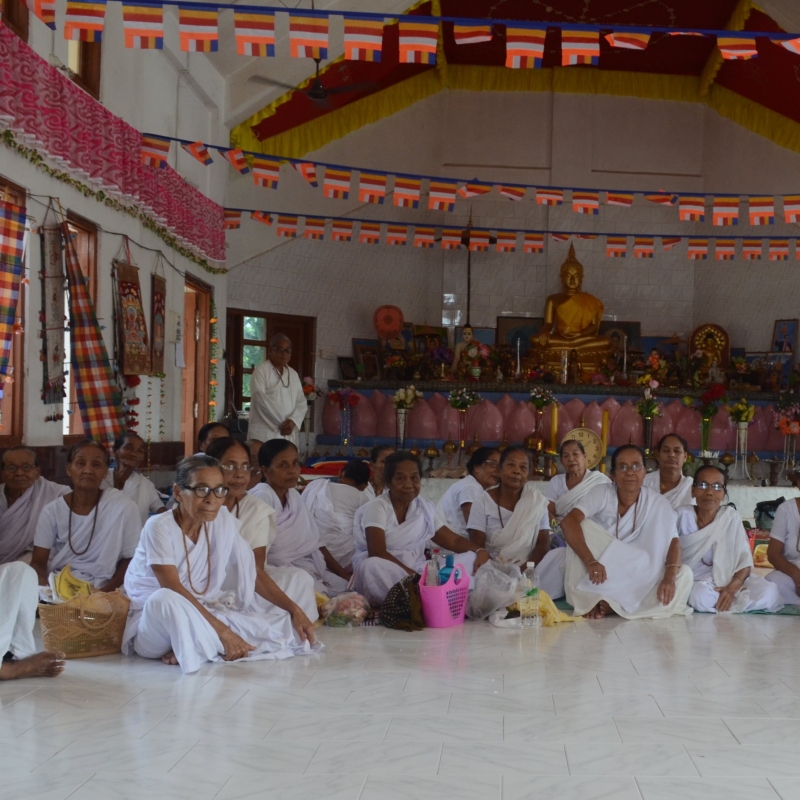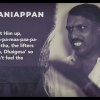Having left their ancient homeland in Yunnan in present-day southwest China in the thirteenth century, and wandering until they reached Assam in the nineteenth century, the Tai Khamyangs’ inherited history correlates to the stability of a past affiliation and of current belonging to a community—immediate and scattered. However, histories in cases of migration such as these, with temporal and geographical distance between definitive narrative points, and where a large part of the histories are founded upon memories, offer an essential epistemological problem. This problem is fairly universal in memory studies—the differentiation between memory and history, between authentic memory and imagined projections, between affiliations of nostalgia and concrete society. The collective consensus of a community in identifying ‘home’ impacts their current sociopolitical identity. The possibility of the creation of hybrid, liminal identities has been proposed in newer studies of migration and memory, where communities inhabit the physical, economic and political space of the adopted land but they are socioculturally attached to their ancient homeland—this holds true for the various Shyam villages across Assam where much of the Tai Khamyang population lives.
Folk Traditions
With a history and a homeland so far removed from the current generation’s reality, folk memory that carries the ancestral narrative becomes all the more significant. The Tai Khamyang communities, spread across Assam and parts of Arunachal Pradesh, zealously hold on to their ancestral sociocultural and religious practices which they carried from their ancestral homeland during their migration towards Northeast India. Traditional knowledge has been orally passed down generations and is expressed through folk memory and sociocultural customs and rituals. These folk traditions become the keepers of the fragmented histories and memories of a bygone era. They are also the means of transferring indigenous knowledge and history through the generations.
The umbrella term ‘folk traditions’ refers to a wide range of homegrown knowledge systems—folktales, folk knowledge, riddles and proverbs, rites and rituals, folk songs, superstitions, etc. A significant archive of Khamyang folk traditions are the stories collected by Poulung Chao Chik Cheng Thaomung from the residents of Powaimukh Shyam Gaon, near Margherita, Assam, in 2014. The residents who had participated were Chao Chik Cheng Thaomung, Chao Mihingda Chaolik and Chao Deben Chaolik. The collected stories were written in Tai Khamyang by Poulung Chao Chik Cheng Thaomung himself and published in a small book Lik Pung Tai Khamyang: Tai Khamyang Golp Puthi (A Tai-Khamyang Story Book).[1]
The residents of Powaimukh Shyam Gaon maintain that the folktales are as old as the language itself. They have codified the ancestral social behaviour, laws and rituals, ideologies and their ancestors’ way of life. The marital, familial and gender roles practised in their sociocultural life are also reflected in these tales. This helps them keep traditions alive. Most of the Tai Khamyang folklore, as with folk stories across regions and communities, focus on moral education, spiritual advice and recommended virtues.
Due to the demands of assimilation in their adopted land, over the years, the current generations of Tai Khamyangs have lost awareness of their language and consequently their folklore and, to a certain extent, their folk knowledge. Some of the youth can recite folk songs and tell stories in the Tai Khamyang language but they do not know the meanings behind the words.
Due to the linguistic and cultural similarity among the different Tai groups (Khamyang, Khamti, Aiton, Phake, Turung and Ahom), the folktales might appear in their folk traditions as well, unaltered or as variants. These common stories can also act as carriers of a shared nostalgia for a homeland left behind in the wave of migration of the Tai groups across the Patkai Hills. Some of the stories in the Tai Khamyang compendium have a definitive Buddhist philosophy, and at least some of these were developed after the integration of the Buddhist way of life into the lives of the Tai people.
Very little of the folklore that had existed is known to us now, thus one cannot make generalisations based on these. Nevertheless, certain thematic unities can be drawn from the existing stories. Animal stories such as ‘Omon-Jomon’ are abundant in Tai Khamyang folklore, each story reflecting an essential moral centre that is used to educate the listeners. Some of the moralities taught are helpfulness, importance of family, honesty, friendship and loyalty. As one informant from Chalapathar Shyam Gaon, near Sivasagar, Assam, revealed, ‘These values are more important to us as a community because we lived as wanderers for so long in search of a stable home. Family and companionship of our fellowmen were all we had.’ Several stories also relate to Buddhist philosophy. Thus, spirituality and sociocultural life in the Tai Khamyang community cannot be seen in isolation.
On a visit to the Buddhist temple of Chalapathar Shyam Gaon, I met a group of Tai Khamyang women who were at the temple preparing to take Astasheel (according to Buddism, the eight precepts administered to people above 50 years of age at a temple during religious festivals). Although the Tai Khamyangs are usually enthusiastic to share their knowledge of their folk traditions, it is not the case with periods of religious significance as one of the older woman from the group informed, ‘We are not supposed to tell stories and make merry during these periods of spiritual importance. Come after this period ends.’
History of the Tai Khamyangs
The Tai Khamyangs hold on to a rich, layered and expansive history based on the handed-down Sitou Tai-Khamyang Buranji[2] (buranjis are historical chronicles written initially in the Ahom and later in Assamese language) and oral stories told and retold over generations. Their history explains the cause of migration and the route they followed, and examines the years of wandering with geographic specifications and their final settlement in parts of Assam.
The following is the history of the Tai-Khamyang as read from the buranji and narrated by Dr Narendranath Shyam and Dr Rabindranath Shyam, residents of Na Shyam Gaon, near Titabor in Jorhat.
During the eleventh and twelfth centuries, 13 kingdoms—Mong-na, Mong-Cha, Mong-Wan, Mong-Mao, Mong-Khon, Mong-Khou, Mong-Mit, Mong-Chan-Che, Mong-Khem, Mong-Jon, Mong-Khun Chi-Phan and Kung-Ma—were ruled by Tai kings. Mong-Mit was ruled by Sukangphaa, whose younger brother Sukaphaa was the first Ahom king of Assam. Sukangphaa had sent Sukaphaa with 3,000 infantry and 300 cavalry to recover their lost territory from the Chinese.[3] The mission was unsuccessful, and Sukaphaa returned to his brother’s kingdom. However, he was denied entry because the king came under the influence of his courtiers who believed that his brother would try to seize the throne. Saddened and angered, Sukaphaa crossed the Patkai Hills and established the Ahom kingdom in 1229 at Soumaar Peeth (Soumaar Division) in the Kamrup region. Later, the king realised his mistake and sent various groups—including Tai Aiton, Tai Phake and Tai Turung—in search of his younger brother. As these search missions yielded no results, a nine-member-led Tai Khamyang group was sent; the members were Thaomung, Chaohai, Pangyuk, Chaolu, Chaolik, Wailung, Tunkhang, Chaosong and Phalek, which later became the nine lineages of the current Khamyang population.
The leader of the search mission was a man named Hailikhi, from the Chaohai Tai Khamyang family. The group passed many Naga villages on their way, and also faced defeat against the Naga king, Honsa. They retreated to one of the Naga villages they had previously defeated and because of the hospitality of the Nagas, Hailikhi lost sight of his original goal. The deputy leaders returned to their homeland and informed the king about the leader’s dereliction of duty. The king sent two men named Thunhang and Thunchang, with the king’s brother-in-law, Pu-Thun Keo Moung, as the leader. They removed Hailikhi from leadership and marched forward. They came across another Naga village, where they engaged in battle and defeated the Nagas. However, the Nagas would never accept their defeat at the hands of others. After an interlude of a couple of days, the Nagas invited the soldiers for a social gathering. The Khamyangs wore bulletproof armour and attended the party. They were made to have a lot of alcohol and meat, and when they let their guard down, the two Khamyang deputies were attacked. The other Khamyangs went in search of them and found they were almost dead. While dying, the deputies told the Khamyangs that it was because of their own greed that they would lose their lives. They also told them that in times of danger, the Khamyang people should pray to them with alcohol and meat, and they would always come to their rescue. Since then, until some 15 or 20 years ago, the Khamyangs would collectively hold a Rajdeo Puja (worship of the godly kings), as per the original instructions of the deputies, in times of danger.
The Khamyangs met Sukaphaa in Abhaypur, located at some distance from Sonari town in Assam. Sukaphaa had established his capital there. They relayed the messages from his brother, and after a few days, prepared to return to their homeland. Sukaphaa suggested that the Khamyangs could live in some intermediate area between his kingdom and his brother’s, as that would make it easier for the brothers to maintain communication. The Khamyangs returned and passed on Sukaphaa’s advice to their king, Sukangphaa. On the way back, they came across the Nongjang and Nongkheu lakes near the Patkai Hills, and decided that the area around there would indeed be suitable to settle. They told the king that if he gave permission, they would settle down near the lakes, and he agreed.
Within a few days, the Khamyangs settled in the lake area. They lived there for almost 500 years, initially setting up their home in the mountains and descending to the valley as their population increased. Thus, on the basis of living locations, the people separated into two groups, Man-Nam and Man-Noi—man means place or area and nam means water, thus Man-Nai means area that holds water. Similarly, as noi means high, Man-Noi is synonymous with mountainous areas. People living in high areas were called Man-Noi, and people living in valleys were called Man-Nam.
However, after 500 years of peaceful existence, they moved from the area to other places, before finally settling in Assam. The buranji explains this departure through the legend of the Nagraj (the king of snakes). According to the legend, there was a Nagraj, a snake that lived in the lakes and cohabited harmoniously with the people. One day, some people saw a huge egg on top of the mountain. They brought it down, cooked it and ate it. However, all those who ate the egg died. At night, the snake went in search of the egg, and created havoc in the lakes. That very night, they left with all they could carry. They entered present-day Arunachal Pradesh, in Khamgjangna in Changlang district. There they lived for a couple of years. They made a Buddha vihar there where they consecrated the Buddha idol they were carrying. When they left the area, they left the idol behind as they believed that they would return again. The Tai Khamyangs finally settled in Assam after the end of the Moamoria rebellion (1769–1805), a four-decade-long civil war against the Ahom kingdom. The present-day villages of Na Shyam, Balijan and Betbari Shyam villages where the Tai Khamyangs now reside were established around 1829.
[3] This references the territory in Yunnan that the ancient Tai kings Khunlai and Khunlung lost to the Chinese.
Bibliography
Chaolu, Wailung et al. Lik Pung Tai Khamyang: Tai Khamyang Golpo Puthi. Jorhat: Phung Lai Khamyang, 2014.
Thai Khamyang Buranji. Guwahati: Thai Khamyang Buranji Pranayan Samity, 2008.













